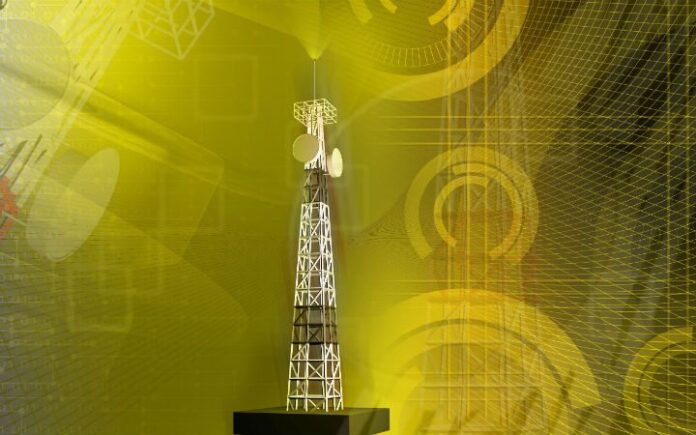IGR provides a refresher on the benefits and challenges of using 600 MHz spectrum, noting great coverage at the expense of greater capacity
As the Federal Communications Commission’s 600 MHz auction gets underway, I thought it would be a good time to review some of the basic laws of physics and how this spectrum can be used. For those of you who have not been paying attention (or, for those in the U.S., perhaps, who have been distracted by your collapsing NCAA basketball bracket), the 600 MHz broadcast incentive auction is the latest opportunity to acquire licensed spectrum in the U.S. As the name suggests, this is a reverse auction where the broadcasters basically say what they would be willing to sell their spectrum for and the mobile operators/other interested parties bid for the same spectrum. The goal is to reallocate significant amounts of spectrum from broadcasters to mobile operators.
The 600 MHz auction is important for several reasons, not least of which is that this is likely to be the last auction in the U.S. for some time and certainly the last low band auction. The next auction will likely be for high band spectrum for “5G” services, such as the 3.5 GHz band. Note that no such auctions are scheduled and no spectrum has been finalized; it is therefore likely to be years before the next auctions. Chances to acquire licensed spectrum do not come along very often, and for this reason, operators usually jump at the chance to acquire it (last year’s AWS-3 auctions being a good example).
Obviously, at this point we have no idea which operators will be successful acquiring spectrum, how much they will have to pay or which regions they will get licenses for. The only certainty is that those not participating (notably Sprint) will not win anything. You have to play to win.
So a little bit of physics. The higher the frequency of the radio signal, the less distance it can travel through the air. Conversely, the lower the frequency, the further it goes. This also applies to buildings, windows, trees, etc.; lower frequency signals go through more stuff. As an example, think about your favorite radio station (mine is 90.5 MHz). You can more than likely get that station miles from the transmitter, inside a building or in an underground garage. Now compare that to your Wi-Fi at home or in the office that is either 2.4 GHz or 5 GHz. Your Wi-Fi probably goes a few hundred yards at best. (In our case, it barely goes outside the house due to the type of windows we have.)
For small cells, mobile operators generally like higher frequencies because it is easier to control the propagation and keep the cell “small.” More small cells over a given area means more capacity than a single cell. So when an operator needs to increase the capacity in a given area, they usually will first add sectors to the macrocells and then try and put in small cells of one type or another.
The original cellular systems in the U.S. used 850 MHz spectrum. LTE was originally launched with 700 MHz spectrum. (AT&T, Verizon Wireless and T-Mobile all have 700 MHz bands in use.) These lower bands are great for covering wide areas with signals and they will generally go into buildings well. But, the fact the signals propagate well also means they are harder to control; deploying small cells with 700 MHz is very difficult and is the reason most operators are using 1.9 GHz or 1.7/2.1 GHz bands for this. Sprint uses its 2.5 GHz band.
Consider a macrocell using the 700 MHz band. To cover the same area with 1.9 GHz cells takes about 2.5 cells. At 2.5 GHz, about 3.7 cells are required to cover the same area. This means 3.7 more infrastructure, towers/locations, etc. And of course, 3.7-times as much capacity if the same amount of spectrum is used.
600 MHz is likely to need about 0.8 cells to cover the same area as a 700 MHz cell. So 600 MHz will be excellent for providing coverage over a given area. And, as we said, the 600 MHz signal is likely to penetrate most buildings – great for indoor coverage. So providing mobile video over a given area or in-building will suit 600 MHz well.
But, 600 MHz will not be good for small cells, as operators need higher bands for this. So 600 MHz will not enable the operators to increase the capacity density of their networks.
Ideally, an operator will have a selection of low band (600 MHz, 700 MHz and 850 MHz) spectrum to provide wide coverage and in-building coverage together with higher bands (1.9 GHz, 1.7/2.1 GHz, etc.) to provide capacity at given locations with small cells, including in-building distributed antenna systems. The trick is in deploying the bands efficiently and economically to meet the market needs.
Much has been said about 5G networks being used to provide higher bandwidth and network speeds and this will take more small cells. So 600 MHz should not be thought of as “5G” spectrum – it is not. It will be used for LTE-Advanced networks (and subsequent releases), while the new 5G IMT-2020 networks will likely use higher bands, such as 3.5 GHz. But, 600 MHz still has value – all licensed spectrum has value. The mobile operators should never turn down the opportunity to acquire new spectrum. 600 MHz will be great for providing bandwidth over a wide area and in hard-to-reach places.

Iain Gillott, founder and president of iGR, is an acknowledged wireless and mobile industry authority and an accomplished presenter. Gillott has been involved in the wireless industry, as both a vendor and analyst, for more than 20 years. The company was founded in 2000 as iGillottResearch in order to provide in-depth market analysis and data focused exclusively on the wireless and mobile industry. Before founding iGR, Gillott was a group VP in IDC’s telecommunications practice, managing IDC’s worldwide research on wireless and mobile communications and Internet access, telecom brands, residential and small business telecommunications and telecom billing services. Prior to joining IDC, Gillott was in various technical roles and a proposal manager at EDS (now Hewlett-Packard), responsible for preparing new business proposals to wireless and mobile operators.
Editor’s Note: Welcome to Analyst Angle. We’ve collected a group of the industry’s leading analysts to give their outlook on the hot topics in the wireless industry.

